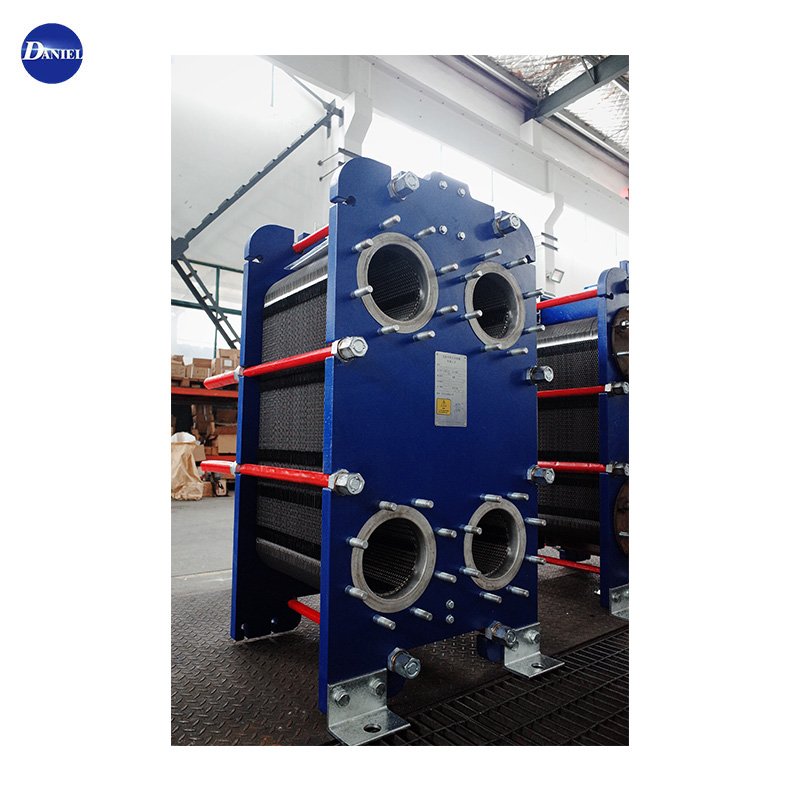
 English
English  Español
Español Português
Português русский
русский Français
Français 日本語
日本語 Deutsch
Deutsch tiếng Việt
tiếng Việt Italiano
Italiano Nederlands
Nederlands ภาษาไทย
ภาษาไทย Polski
Polski 한국어
한국어 Svenska
Svenska magyar
magyar Malay
Malay বাংলা ভাষার
বাংলা ভাষার Dansk
Dansk Suomi
Suomi हिन्दी
हिन्दी Pilipino
Pilipino Türkçe
Türkçe Gaeilge
Gaeilge العربية
العربية Indonesia
Indonesia Norsk
Norsk تمل
تمل český
český ελληνικά
ελληνικά український
український Javanese
Javanese فارسی
فارسی தமிழ்
தமிழ் తెలుగు
తెలుగు नेपाली
नेपाली Burmese
Burmese български
български ລາວ
ລາວ Latine
Latine Қазақша
Қазақша Euskal
Euskal Azərbaycan
Azərbaycan Slovenský jazyk
Slovenský jazyk Македонски
Македонски Lietuvos
Lietuvos Eesti Keel
Eesti Keel Română
Română Slovenski
Slovenski मराठी
मराठी Srpski језик
Srpski језик
Plate Heat Exchanger Performance Characteristics
In industrial thermal systems, efficiency is paramount. Selecting the right heat exchange technology directly impacts operational costs, energy consumption, and overall productivity. The plate heat exchanger stands out as a premier solution for countless applications due to its superior performance characteristics. Understanding its core parameters is essential for making an informed investment.
This guide provides a detailed breakdown of the key performance metrics that define a high-quality plate heat exchanger.
Core Performance Parameters & Specifications
The efficiency of a plate heat exchanger is determined by a combination of its design, materials, and operational limits. Below is a comprehensive list of the critical parameters you should evaluate.
Key Performance Characteristics:
-
High Thermal Efficiency: The compact design and corrugated plates create tremendous turbulence, resulting in exceptionally high heat transfer coefficients compared to other exchanger types.
-
Compact Footprint: A plate heat exchanger provides a large heat transfer surface area within a remarkably small space, saving significant room in your facility.
-
Flexibility & Scalability: The modular plate-pack design allows for easy capacity adjustments. Plates can be added or removed to meet changing process demands.
-
Low Maintenance Costs: Designed for easy inspection and cleaning. Plates can be accessed by loosening the frame, reducing downtime for maintenance.
Technical Specifications Table:
The following table outlines standard specifications for a typical stainless steel gasketed plate heat exchanger. Specific values will vary by model and application.
| Parameter | Specification Range | Notes |
|---|---|---|
| Maximum Operating Pressure | 10 to 25 bar (145 to 360 psi) | Dependent on frame strength and plate design. |
| Maximum Operating Temperature | -35°C to 200°C (-31°F to 390°F) | Limited by gasket material (e.g., NBR, EPDM, Viton). |
| Plate Materials | Stainless Steel (AISI 304/316), Titanium, Inconel | Chosen for corrosion resistance based on media. |
| Gasket Materials | Nitrile (NBR), EPDM, Viton® | Selected for compatibility with fluid temperature and type. |
| Heat Transfer Area | 1.0 m² to 2,000+ m² (10.7 to 21,500+ ft²) | Scalable based on the number of plates installed. |
| Flow Rate | Up to 3,000 m³/h (13,200 US gpm) | Configured for a wide range of volumetric demands. |
Why These Characteristics Matter for Your Operation
The parameters listed above directly translate into tangible benefits. The high thermal efficiency ensures you use less energy to achieve your desired process temperature. The compact footprint saves valuable floor space, which can be allocated to other equipment. The flexibility of the design means the same unit can be adapted for future process changes, protecting your long-term investment.
Furthermore, the robust construction materials ensure longevity and reliability even when handling aggressive media or operating at extreme temperatures and pressures. The easy maintenance characteristic of a standard plate heat exchanger minimizes service interruptions and keeps lifetime ownership costs low.
When sourcing a new system, always cross-reference your process requirements (fluid types, temperatures, pressures, and desired outlet temperatures) with the detailed performance characteristics of the unit. Partnering with a manufacturer that provides transparent and comprehensive data is key to ensuring optimal performance and reliability for your specific application.
Investing in a well-specified plate heat exchanger is a decisive step toward achieving peak operational efficiency and significant energy savings.
If you are very interested in Jiangyin Daniel Cooler's products or have any questions, please feel free to contact us!






